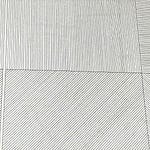I just read about something pretty cool. Five people in a UC Berkeley (Go Bears!) lab experienced a color that's never been seen before by human eyes. They called it Olo—a super-saturated bluish-green that exists beyond what our eyes can naturally perceive. The only way to see it? Special laser technology that precisely targets specific photoreceptors in the eye.
This got me thinking: If something exists but most people can't naturally perceive it, does that make it any less real or meaningful?
Seeing What Others Can't
So here's the thing about Olo: it was always there.
Not invented.
Just revealed.
The color existed in a “sensory blind spot”, waiting for the right technology to make it visible. Once revealed, it became undeniably real to those few who experienced it.
“Undeniably Real” is a super interesting concept when talking about something not everyone can actually see.
It's definitely what happens with visionaries and entrepreneurs. And it certainly relates to faith in religion. These things can’t be verified and visualized by the masses. But to those who dream it up or have faith in its existence, it is “undeniably real.”
When Tesla described wireless energy transmission or when Steve Jobs imagined a new way to design a mobile phone they were perceiving possibilities beyond most people's visual field. They saw their version of "Olo" while everyone else was stuck with the usual color spectrum.
The Frustration of Clear Vision
Imagine being one of those five participants. Someone asks you, "What did you see?" You try explaining: "It's like water green, but more saturated than anything you've ever seen." Words fall short. You can't adequately describe experiences that fall outside shared reference points.
The researchers who authored the study say the color that they say is the closest is hexadecimal color #00ffcc. But the true color of Olo is much more vibrant.
When I see that I think: “ok so Olo is just a vibrant teal. How is that a new color?”
How can I truly interpret something I’ve never seen before? Why should I believe someone who says this color is new and different when the example they give me is a color I already know exists?
This is a similar fundamental frustration to any person who is trying to move the needle in innovation or art or thinking. I've felt it myself. You see something so clearly that others just can't perceive yet. You're formulating in your mind this vision that isn’t definable. You're pushing artistic boundaries. You're formulating game-changing theories. But there's this massive gap between your vision and others' perception.
Galileo wasn't just sharing ideas when he insisted Earth revolves around the sun. He was desperately trying to describe his "Olo" a truth he could see that wasn't yet accessible to everyone else.
Bridging Vision and Reality
What makes this Olo discovery so powerful isn't just that a new color was perceived. It's that researchers developed technology so others could experience it too. They built a bridge from theoretical to experiential.
That's the real work that needs to be done. Not just seeing what others can't, but creating pathways for shared perception. When you think about all the people in history that truly moved the needle, their greatest achievement wasn't the seeing.
It was the sharing in a way where everyone could experience it and understand it for themselves.
Innovators aren't satisfied with personal perception. They're driven to expand the boundaries of what humanity collectively sees as possible. But I contend innovation can’t happen until people universally understand it. If only a small group of people understand it, isn’t it too fringe to be true innovation?
The Olo Effect
I'm calling this phenomenon "The Olo Effect". It’s the principle that the most transformative innovations begin as perceptions accessible only to a few, requiring both technical and communicative bridges to become part of shared reality.
Human progress is basically a series of Olo moments. Someone perceives what was previously imperceptible, then creates means for others to see it too. From the first person to harness fire to scientists now mapping quantum realms, we advance by making the unseen seeable.
A Message to Visionaries
If you're frustrated because others can't see what you see so clearly, remember Olo. The gap between your perception and others' understanding doesn’t mean anything to the validity of your idea. It's just the natural distance between discovery and dissemination.
The world desperately needs people who see beyond current limitations. People who glimpse possibilities in spaces between established truths. But “seers” are nothing without “builders”. People doing the hard work of building bridges that allow others to see it for themselves.
Those Berkeley researchers didn't just announce Olo theoretically existed; they created means for others to experience it directly. That's innovation's essential work! Not just seeing differently but creating conditions where others can share that vision.
So if you see something others can't yet perceive, hang in there. Your "Olo" isn't less real just because others can't see it. The path from personal insight to collective understanding might take a while and require brainstorming of it’s own. But this journey of translation (making the invisible visible) is how human progress happens.
Tomorrow can bring more colors just waiting to be revealed. Who will be the visionaries brave enough to show them to the world?













